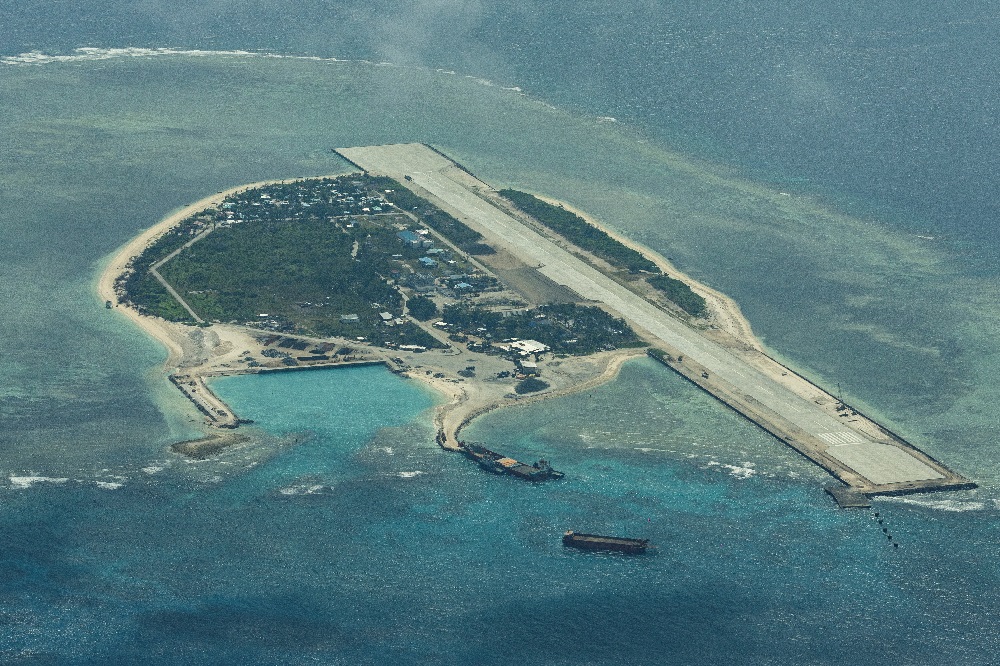China’s recent release of its new “standard map,” reaffirms Beijing’s expansive territorial claims in Asia, while sparking outrage among its neighbors and raising concerns about the potential for increased conflict in the region. This latest move by China not only escalates tensions over disputed territories but also underscores the growing assertiveness of Chinese President Xi Jinping, whose ambitions and actions are increasingly seen as a threat to global peace and security.
Xi Jinping’s Fanaticism and Historical Revisionism
Under Xi Jinping’s leadership, China has taken a sharp turn toward authoritarianism, with Xi at the center of a personality cult reminiscent of past totalitarian regimes. Xi’s desire to be revered by the Chinese people has led to a rewriting of history books, with schoolchildren being taught to worship him as the embodiment of the Chinese state. This glorification of Xi is part of a broader effort to cement his legacy and secure his control over the country.
Xi’s fanaticism extends beyond mere propaganda. His administration has worked tirelessly to erase the cultural heritage of China, which was already severely damaged during the Cultural Revolution—a period in the 1960s and 1970s when Mao Zedong’s policies led to the widespread destruction of Chinese culture, history, and religion. In just one generation, the Cultural Revolution wiped out much of China’s historical identity, replacing it with a rigid communist ideology that continues to shape the nation’s policies today.
China’s Aggressive Expansionism
China’s new map, which includes a U-shaped line that asserts sovereignty over almost the entire South China Sea, has infuriated neighboring countries. The South China Sea is a strategically important and resource-rich region through which trillions of dollars in trade flow each year. The map’s extension into the exclusive economic zones of countries like the Philippines, Malaysia, Vietnam, Taiwan, and India has led to strong objections from these nations.
The map’s release is seen as a deliberate provocation. China has already been engaged in a series of aggressive actions in the region, including the construction of military installations on disputed islands, the harassment of foreign vessels, and the use of water cannons against Philippine ships. By publishing this new map, China is not just reaffirming its territorial claims—it is signaling its willingness to enforce them through military might.
The South China Sea: A Flashpoint for Conflict
The South China Sea has long been a flashpoint for conflict, with multiple countries laying claim to its waters and islands. China’s assertion of sovereignty over the area is based on its so-called “nine-dash line,” which has now been expanded to a “ten-dash line” that encircles Taiwan. This move is particularly alarming to Taiwan, a self-governing island that Beijing considers a breakaway province. Taiwan has consistently rejected China’s claims, asserting its independence and sovereignty.
The disputes over the South China Sea are not just about maps—they are about control of one of the world’s most important maritime regions. China’s actions threaten the freedom of navigation in these waters, a principle that is vital to global trade. By pushing its territorial claims, China risks triggering a broader conflict with its neighbors and potentially with other global powers, such as the United States, which has a vested interest in maintaining open sea lanes.
China’s Bribery and Debt-Trap Diplomacy
China’s ambitions are not limited to its immediate neighbors. The country has been extending its influence across the globe through a combination of bribery, debt-trap diplomacy, and strategic investments. Through its Belt and Road Initiative (BRI), China has provided loans to developing countries for infrastructure projects. However, these loans often come with high interest rates and unfavorable terms, leading to situations where countries are unable to repay their debts. When this happens, China seizes control of critical infrastructure, such as ports and highways, further extending its reach.
In Africa, Southeast Asia, and Latin America, China’s debt-trap diplomacy has left several countries indebted and vulnerable to Chinese influence. This strategy allows China to gain strategic footholds in key regions, undermining the sovereignty of the affected nations and expanding Beijing’s global power.
The Exodus of China’s Wealthy
While China projects strength abroad, internally, the situation is more complex. Many of China’s wealthy businesspeople are making their money and fleeing the country, taking their wealth with them. This exodus reflects a lack of confidence in China’s future under Xi Jinping’s increasingly authoritarian rule. These wealthy elites are moving their assets to more stable and democratic countries, fearing that their wealth and freedoms could be at risk in a nation where the rule of law is subservient to the whims of the Communist Party.
Unlike democratic nations, where citizens can protest and demand change, the Chinese people appear unable or unwilling to stand up for their human rights and challenge the dictatorship. The Communist Party’s tight control over information, combined with a powerful surveillance state, makes it extremely difficult for dissent to gain traction. As a result, many Chinese citizens, particularly the wealthy, see leaving the country as their best option for preserving their wealth and securing their future.
The Tibetans: A Suppressed Culture
The plight of the Tibetan people is a stark example of China’s disregard for human rights and cultural preservation. Since the 1950s, Tibet has been under Chinese control, and the region’s unique culture and religion have been systematically suppressed. The Chinese government has attempted to erase Tibetan identity through forced assimilation, the destruction of religious sites, and the imposition of Chinese language and education on the Tibetan population.
The Dalai Lama, Tibet’s spiritual leader, has been exiled for decades, and any expressions of Tibetan nationalism are harshly punished. The situation in Tibet is a reminder of what happens when a dominant power seeks to impose its will on a minority group, disregarding their rights and cultural heritage.
China’s Ever-Growing Conflicts with Its Neighbors
China’s aggressive territorial claims are not limited to the South China Sea. The country is involved in a series of disputes with its neighbors, each of which has the potential to escalate into a broader conflict:
- Japan: China and Japan have long-standing disputes over the Senkaku Islands (known as the Diaoyu Islands in China), a group of uninhabited islands in the East China Sea. Both countries claim sovereignty over the islands, which are strategically located and potentially rich in resources.
- Taiwan: Taiwan remains one of the most sensitive issues for China. Beijing considers Taiwan a breakaway province and has not ruled out the use of force to achieve reunification. Taiwan, on the other hand, sees itself as an independent state with its own government, military, and constitution.
- Hong Kong: The situation in Hong Kong has deteriorated since the Chinese government imposed a draconian national security law in 2020. This law effectively ended Hong Kong’s autonomy and led to a crackdown on pro-democracy activists and journalists. The once-vibrant city is now under tight control, with little room for dissent.
- The Philippines, Malaysia, and Vietnam: These Southeast Asian nations have all rejected China’s territorial claims in the South China Sea, leading to frequent clashes with Chinese vessels. The situation remains tense, with the potential for further escalation as China continues to assert its dominance in the region.
- India: The border dispute between China and India is another flashpoint. The two countries have clashed several times over the Line of Actual Control (LAC) in the Himalayas, with the most serious incident occurring in 2020 when soldiers from both sides engaged in a deadly skirmish. China’s inclusion of Indian territories in its new map has further strained relations.
Global Implications: A Threat to Peace and Security
China’s actions under Xi Jinping pose a significant threat to global peace and security. By expanding its territorial claims, building military installations in disputed areas, and using economic leverage to control other countries, China is challenging the international order. The aggressive stance taken by Beijing increases the risk of conflict, not just in Asia, but globally, as other powers may be drawn into the disputes.
Moreover, China’s internal policies—its suppression of dissent, rewriting of history, and promotion of Xi Jinping as a quasi-deity—reflect a regime that is increasingly isolated from the values of democracy, human rights, and rule of law. As China continues to rise, the world must grapple with the implications of a powerful, authoritarian state that shows little regard for the norms that have governed international relations for decades.
Conclusion: A Critical Juncture
The world is at a critical juncture in dealing with China’s growing influence and aggression. The release of the 2023 map is just the latest in a series of actions that highlight Beijing’s ambitions and willingness to assert its dominance at any cost. As China continues to challenge its neighbors and the global community, the need for a coordinated and principled response becomes ever more urgent. The future of global peace and security may well depend on how the world addresses the challenges posed by Xi Jinping’s China.




